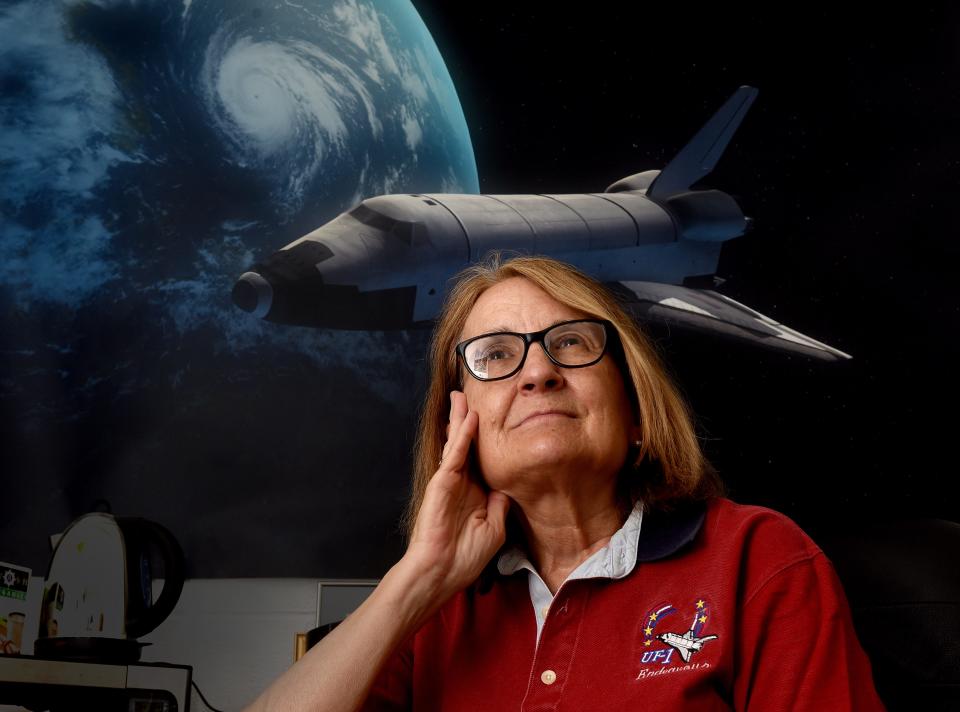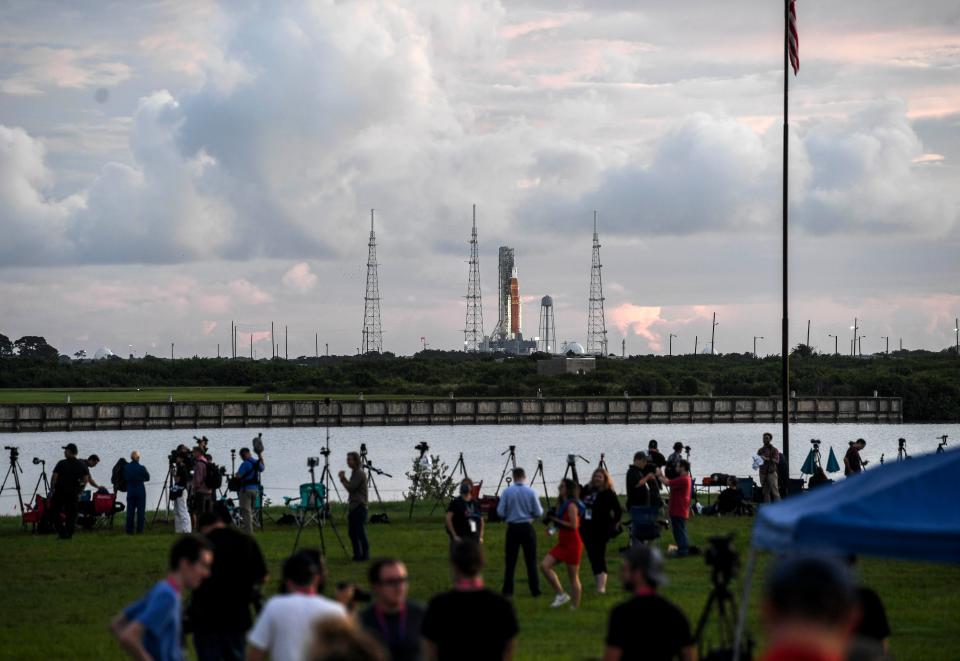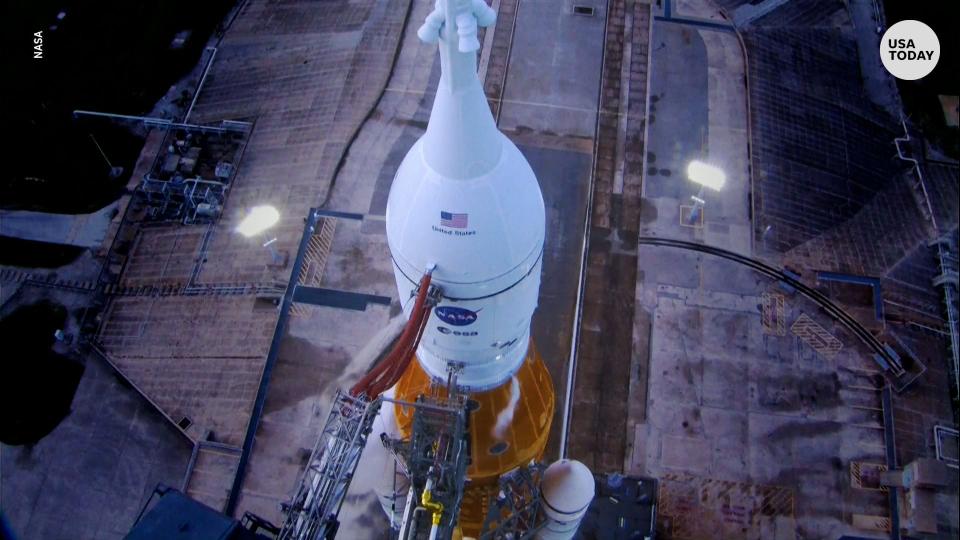Missouri professors, retired astronaut hope NASA's Artemis I inspires new generations about space

Astronauts left the moon in 1972 and they haven't been back.
That could change by 2025 or 2026, and NASA's Artemis program plans to establish a permanent base there before using the moon as a launch pad to Mars.
It all starts with the 42-day Artemis 1 test flight, without a crew.
'This time we plan to stay'
The prospect of returning to the moon excites some professors at the University of Missouri and Missouri University of Science and Technology, including a retired astronaut.
NASA has set a launch window starting at 1:17 p.m. Saturday for the Artemis I launch, though some reports indicated that weather may prevent it.
"Some people weren't around when we last went to the moon," said Linda Godwin, a retired MU professor of physics and astronomy and retired astronaut. She flew on four Space Shuttle missions.
More: Building addition brings new entryway, wing of classrooms to Rock Bridge Elementary School
"This time we plan to stay," Godwin said of human moon landings.
Monday's launch was scrubbed over fueling issues.
"You'll run into issues anytime you're starting a new program," Godwin said of the scrubbed launch. "It's a complicated system."

It comprises the Orion spacecraft and the Space Launch System rocket, sometimes referred to generically as the Artemis rocket.
When people return in a few years, they will land at the moon's south pole.
"The south pole area looks really interesting," Godwin said. "Because of the craters there, we could find a lot. We have this really interesting moon and an opportunity to really explore it."
The launch will stir up memories for her, but she doesn't desire to be an astronaut again.
"I was there for the duration of the shuttle program," she said. "It's kind of determined by when you live and where your opportunities are."
The rocket and spacecraft will be tested to its limits over 42 days, Godwin said.
"It will come back at high speeds," she said. "We'll see how it works from start to finish."
She would like to travel to Florida to view a future Artemis launch, possibly when people return to the moon, she said.
Apollo's twin sister

Artemis, in Greek mythology, was the twin sister of Apollo.
The flight to the moon will take several days. The Orion capsule, propelled by a service module, at its closest approach will fly 60 miles above the moon's surface. It will be propelled by the moon's gravity on an orbit that will take it 40,000 miles past the moon.
It's expected to travel 1.3 million miles during the test flight.
More: These companies received Boone County Chapter 100 tax breaks. EquipmentShare could be next
When Orion returns, it will enter the atmosphere traveling at 25,000 miles per hour, producing temperatures of 5,000 degrees to test the heat shield.
It will land by parachute in the Pacific Ocean off the coast of San Diego.
When humans return to the moon, the first to return will be a woman and a person of color, NASA has said.
Long overdue
Another academic who will be watching the Artemis launch is Hank Pernicka, Curators Distinguished Teaching Professor of aerospace engineering at Missouri S&T.
"I'm very excited," Pernicka said of NASA's goal of returning to the moon. "It's been more than 50 years. It's long overdue."
This time will be different, Pernicka said.
"The Apollo missions was planting a flag," he said. "This is a sustained mission focusing on the south pole. There, we may find water for drinking and perhaps turned into fuel to travel to Mars."
The Space Launch System is NASA's most powerful rocket, Pernicka said.
"It has a lot of power and a large payload," Pernicka said. "I tell my students mass is everything and gravity is strong."
His students also are very excited about the launch and the program, he said.
SpaceX has its Starship super heavy rocket that could complement the SLS, he said.
"SpaceX especially has been inspiring," Pernicka said. "SpaceX has really started to change the nature of our business."
More: Judge rules in favor of CPS in whistleblower lawsuit related to gifted education placement
The rockets aren't that different from those from 50 years ago, but the technology around human space flight has changed dramatically since Apollo, Pernicka said.
"Everything else around those core components is so much better and so much faster," Pernicka said.
Vying for attention

Craig Kluever, MU professor of mechanical and aerospace engineering, is a fan of the Saturn V rockets that previously took astronauts to the moon.
The Space Launch System is mighty impressive, but it isn't all new, Kluever said.
"The SLS is a new integrated vehicle using known and tested parts from the Space Shuttle's solid rocket boosters and Delta rockets," Kluever said. "What the launch scrub shows is the intricacies of having cryogenically cooled components."
The first stage of the Saturn V was kerosene and liquid oxygen, but the SLS uses liquid hydrogen and liquid oxygen, which the shuttle also used.
"They are the most complex rocket engines ever built, but they are the most efficient," Kluever said.
The solid rocket boosters are essentially a controlled explosive inside a metal casing, he said.
While the Saturn V was taller and more slender, the SLS has other benefits, he said.
"It actually has slightly higher thrust," Kluever said of SLS. "It has almost 9 million pounds of thrust."
He was in kindergarten when Neil Armstrong first walked on the moon in 1969, he said.
"Let's see if this vies for the same attention as the Apollo program did," Kluever said. "I sure hope so."
Times and attention spans have changed, he said.
"It would be really nice if this could make everybody stop and have kind of a common interest for a short amount of time."
Roger McKinney is the education reporter for the Tribune. You can reach him at rmckinney@columbiatribune.com or 573-815-1719. He's on Twitter at @rmckinney9.
This article originally appeared on Columbia Daily Tribune: Missouri professors, retired astronaut hope NASA's Artemis I inspires

